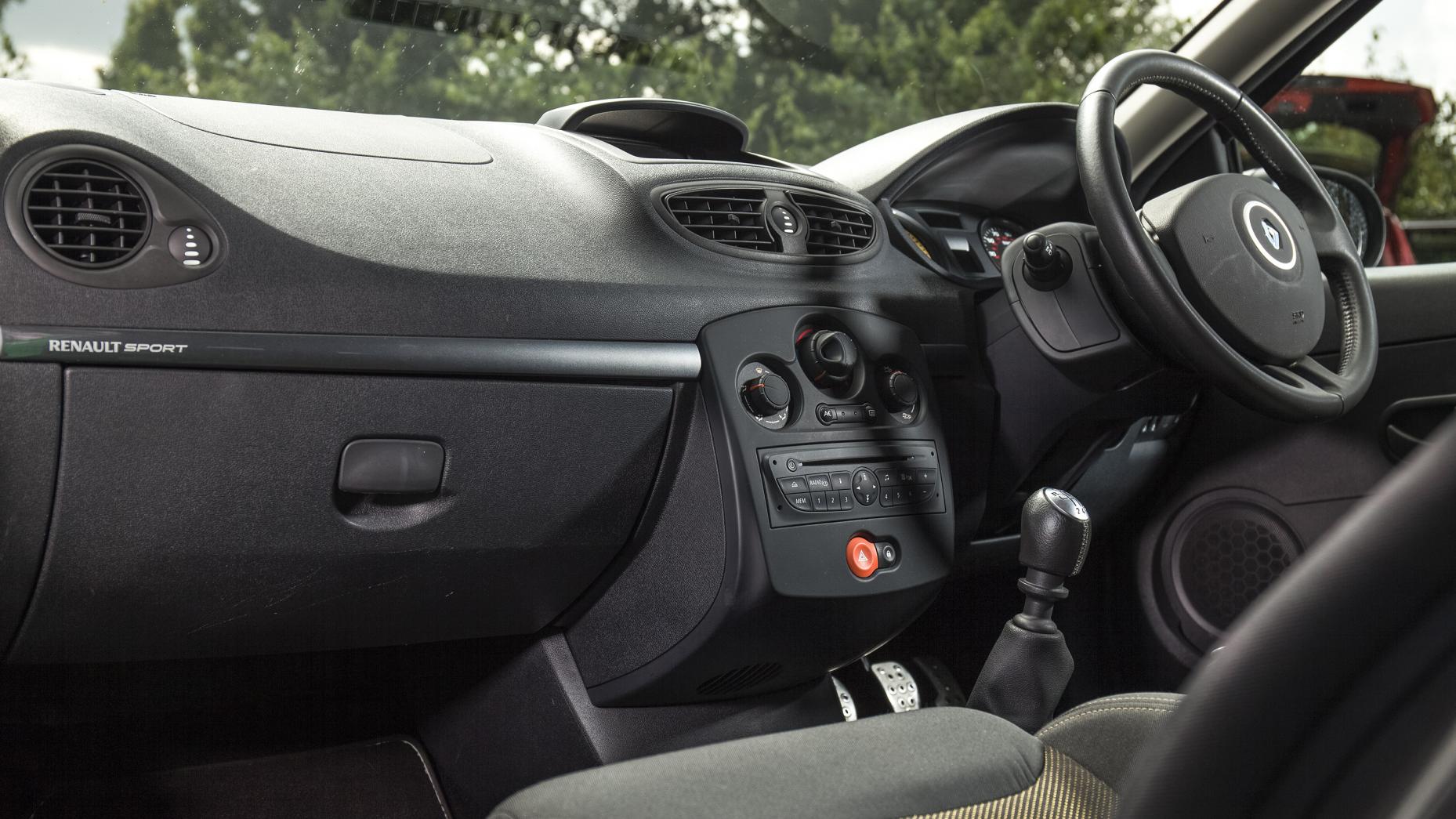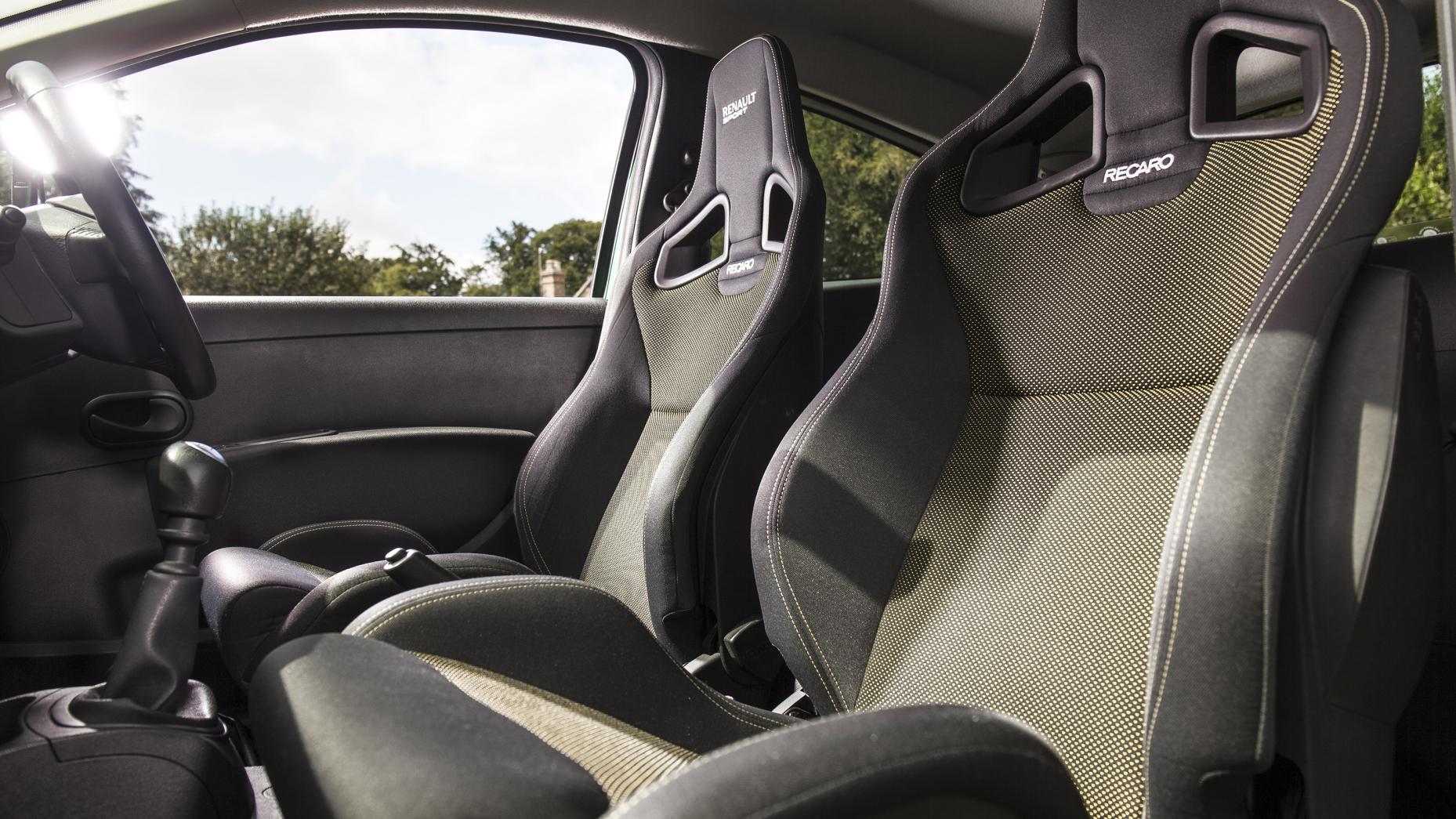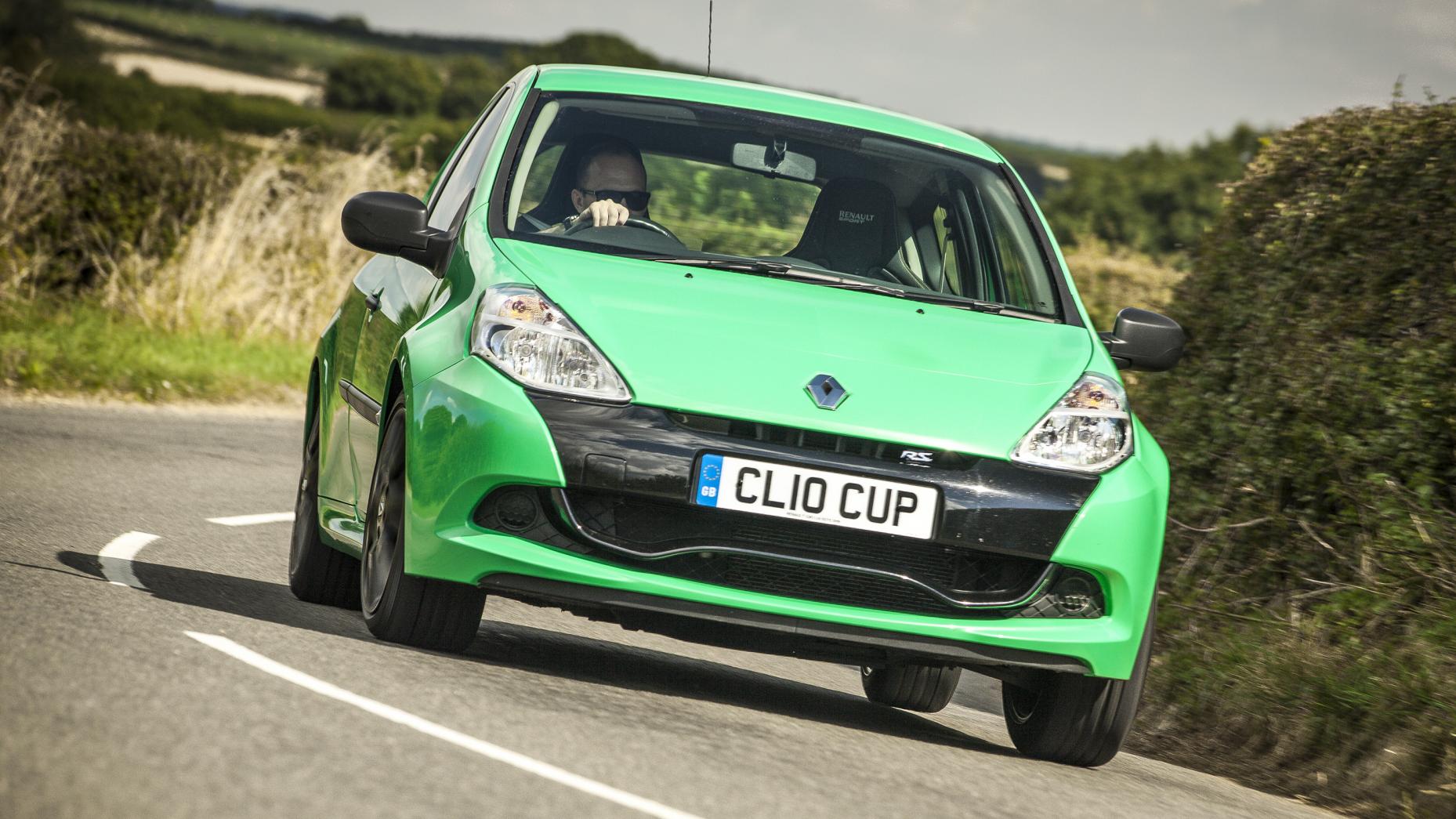
Buying
What should I be paying?
The engine has been described as ‘unburstable’, but like anything delivering highly strung performance, you want to know it’s been well looked after.
Servicing should be annually or every 12,000 miles, so you want to look through the service book and make sure the stamps are all there. If the car has been a regular on track days, don’t worry too much, just make sure oil changes have been more frequent yet.
Every five years or 72,000 miles (whichever arrives first), the car needs belt changes as part of its service. Plenty of cars in the classifieds are yet to reach this marker, but factor the cost into your budget if either marker arrives soon (£500 at an independent specialist, £850 at a main dealer). And in cars older than five years, ensure the full service has been carried out.
The nature of the Clio’s power delivery means it’s not the most natural car to pull away from a standstill in, particularly when it’s cold. But this isn’t a fault, more a little character flaw. So if you kangaroo like a learner driver at the beginning of your test drive, don’t fret. They all do that, until you’ve worked your own clutch use around it. Once you have, you’ll never notice it again.
Renault claimed 34mpg when new; the truth is somewhere between 28 and 30mpg in everyday use, or 25mpg (and below!) when you’re using it how it’s intended. It runs better on posher fuels, and lots of owners go for higher octane, premium petrol, but it will still run on regular 95 if you’re tight on fuel budget.
One major known fault concerns the gearbox. When it’s in working order it’s superb: a slick, sweet shift that shows manual hot hatches at their best.
But… many owners have suffered a failure with the six-speed transmission’s synchromeshes, particularly in third and fourth. The most cost-effective solution is a whole new gearbox, so you want to make your way up and down the gears numerous times on your test drive, attentive for any crunches or hesitancy.
Many cars had their gearbox fail at around 25,000 miles, and had it replaced under warranty. No harm in buying a car where this has happened; if anything, it should shield you from the issue arising in the future.
Given the use this car encourages, you might go through tyres (fronts, particularly) quicker than you anticipate. So check the state of the tread depths of the car you’re looking at, and should you choose to buy one, consider swapping fronts and rears a few thousand miles into each set of tyres to even out the wear. Average daily use should easily see tyres last 10,000 miles, though.
As standard, the Clio got Continental Sport Contact 3s, a fantastic all-weather tyre, but many owners upgrade to stickier options if their car is a frequent visitor to track days. It runs a pretty common tyre size, so your options are very wide-ranging.
Checking tread is also important to identify uneven wear, as the Clio is prone to geometry issues, its firm ride not always getting on with Britain’s beaten-up roads. So on a test drive, find a safe place, and drive with a very loose grip of the steering wheel to see if the car naturally pulls to the left or right. Factor in £100 for a proper geometry set-up if it does.
Finally, steering racks can be a weak point, so listen for unusual noises while parking. It’s around £500 to fix.
Featured

Trending this week
- Car Review
BMW 1 Series
- Top Gear's Top 9
Nine dreadful bits of 'homeware' made by carmakers






